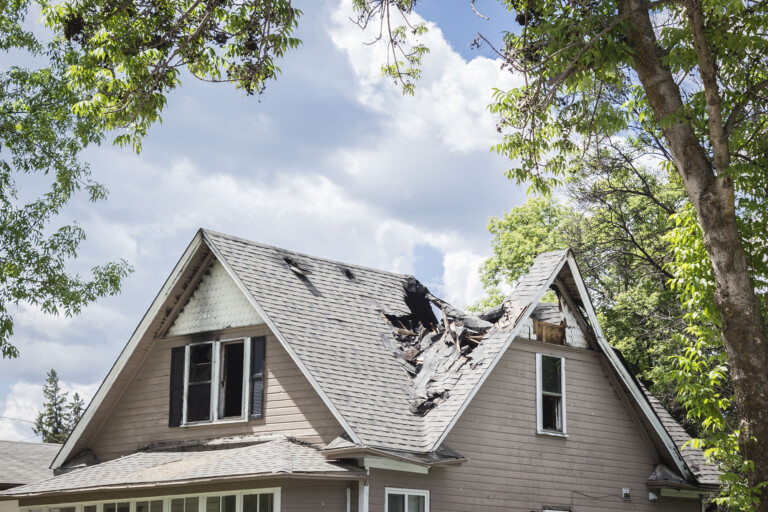In the recent case of Ledcor Construction Limited v. Northbridge Indemnity Insurance Company, the Alberta Court of Appeal was asked to decide whether a construction project “All Risks” property insurance policy covered damage caused by one trade contractor improperly cleaning windows provided by another trade. In particular, the issue was whether the window damage was excluded as “poor workmanship” or covered as “resulting damage.”
Facts
Station Lands Ltd. (“Station Lands”) retained Ledcor Construction Ltd. (“Ledcor”) as construction manager and a number of other trades for the construction of the EPCOR Tower in Edmonton.
Station Lands obtained an “All Risks” policy (the “Policy”) from Northbridge Indemnity Insurance Company and other insurers (the “Insurers”) for the project. The Policy covered all “direct physical loss or damage except as hereinafter provided”, with Station Lands and Ledcor as named insureds. Contractors, subcontractors, architects, engineers and all entities providing services or materials were additional insureds. The Policy contained the following exclusion (the “Exclusion”):
This policy section does not insure:
…
- The cost of making good faulty workmanship, construction materials or design unless physical damage not otherwise excluded by this policy results, in which event this policy shall insure such resulting damage.
Near completion of the tower, a trade contractor named Bristol Cleaning (“Bristol”) was retained by Station Lands to do a “construction clean” of the building’s exterior, including the windows that had concrete splatter, paint specks and other construction dirt. In carrying out its work, Bristol caused damage to the windows by using dull or inappropriate blades to scrape off dirt, failing to properly clean the blades during the process, and failing to follow the manufacturer’s cleaning instructions. As a result, the glass had to be replaced. The Insurers claimed the Exclusion applied to the loss. Ledcor and Station Lands sued for coverage.
Trial
At trial, Ledcor and Station Lands argued that the Exclusion only removed coverage for the cost of having to re-do the cleaning with proper methods and tools. The damage to the windows was “physical damage not otherwise excluded” and therefore covered. The Insurers argued that “work” and “workmanship” did not just apply to the labour of the task but also the materials being worked on. The trial judge concluded that both interpretations were plausible and that prior case law on the subject was inconclusive and inconsistent. Having found the Policy to be ambiguous, the judge applied the doctrine of contra proferentum to reach the conclusion that the damage to the windows was covered. The Insurers appealed.
Appeal
In interpreting the Policy, the Alberta Court of Appeal noted that the base coverage was for “physical loss” and therefore the exclusion for the “cost of making good faulty workmanship” must exclude some physical loss or else the exclusion would be redundant. However, the Exclusion includes a proviso that “resulting damage” that is “physical damage not otherwise excluded” is nonetheless covered. Therefore, the Court of Appeal recognized it must determine the line between physical loss that is excluded because it is the “cost of making good” faulty workmanship, materials or design and the physical loss that is covered because it is “resulting damage”.
The Court of Appeal determined that the proper test for application of the Exclusion is a test of connectedness between the work, the damage, and the physical object or system being worked on. Although the application of the test will depend on the facts of each case, the Court of Appeal set out the following primary considerations:
- The extent or degree to which the damage was to a portion of the project actually being worked on at the time, or was collateral damage to other areas. The test will be relatively easy to apply when the damage is caused directly by the work to the very object being worked on. There may be cases where several parts of the project work together as one system. Work on one part of the system may cause damage to another part, but repairing that damage might still properly be characterized as the cost of making good faulty workmanship if there is sufficient systemic connectedness;
- The nature of the work being done, how the damage related to the way that work is normally done, and the extent to which the damage is a natural or foreseeable consequence of the work itself. If the damage is a foreseeable consequence of an error in the ordinary incidents of the work, then it presumptively results from bad workmanship; and
- Whether the damage was within the purview of normal risks of poor workmanship, or whether it is unexpected and fortuitous.
The Court of Appeal recognized that this physical or systemic connectedness test could lead to extreme results in extreme cases where, for example, an entire building that is burnt down by a cleaner working on the entire building would not be covered by insurance. However, the Court of Appeal noted that such extreme cases might call for a separate test or an exception to the connectedness test but the court declined to explore this issue further.
Here, the damage to the windows was caused directly by the cleaning carried out by Bristol. The scraping and wiping motions that caused the damage were the actual “work” and because the scraping and wiping forces were intentionally applied, the damage was not accidental or fortuitous. Repairing the resulting damage would be “making good the faulty workmanship” that caused the damage and therefore the cost of repairing the windows was excluded. The Court of Appeal therefore overturned the trial decision and ruled in favour of the Insurers.
Conclusion
There can be little doubt that the Court of Appeal’s “systematic connectedness” test will be further analyzed in future cases. When arranging their insurance, insureds seeking greater certainty of wider coverage might press for addition of the more specific “particular part” language to restrict the scope of the faulty workmanship and materials exclusion. Conversely, insurers wanting to provide narrower coverage might resist addition of “particular part” language and see how far the systematic connectedness test goes.
The Court of Appeal may have re-opened a can of worms by adding the finding that the scraping and wiping forces were intentionally applied and so the foreseeable damage was not accidental or fortuitous. That is an insuring agreement issue which, if true, would put the loss outside coverage without any exclusion coming into play. The Supreme Court of Canada’s 2010 decision in Progressive Homes v. Lombard Insurance was thought to have put an end to this debate, at least in the context of a CGL policy. The SCC noted there that it was simply not correct to say defective workmanship was not an “accident”.
If you have any questions about this case, please contact Glen Boswall (604.643.3125 or email [email protected]), or any other member of Clark Wilson’s Insurance Group.


